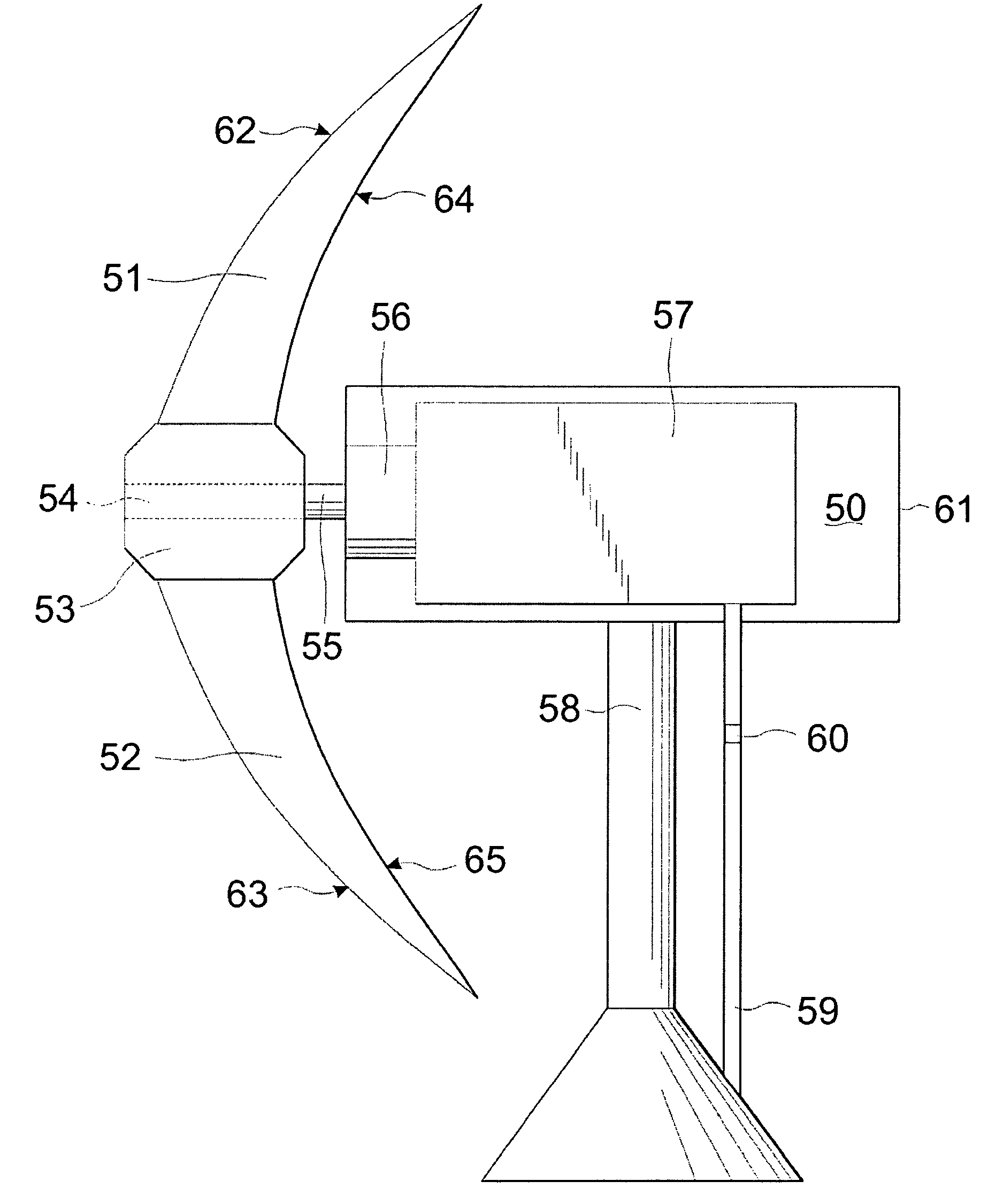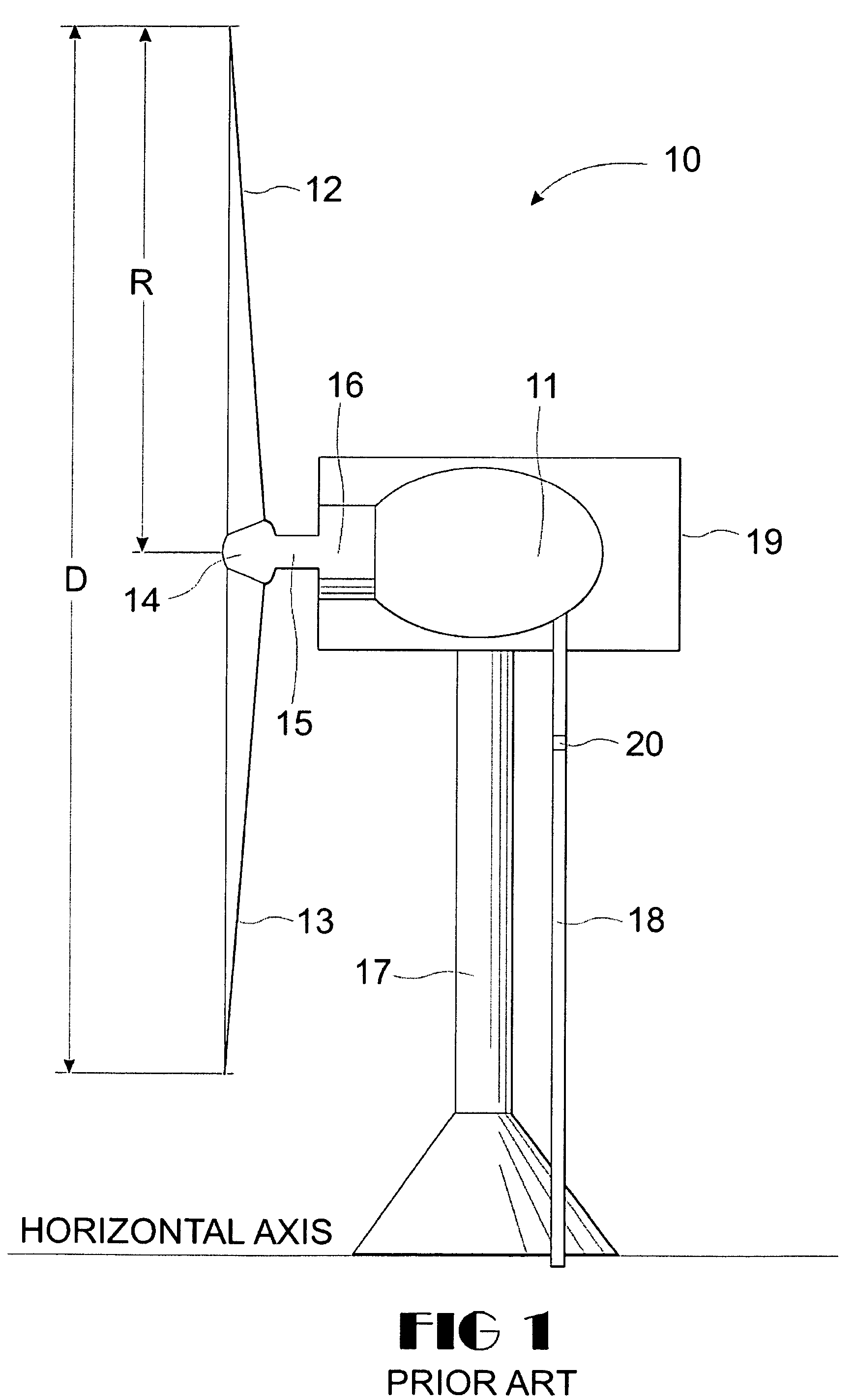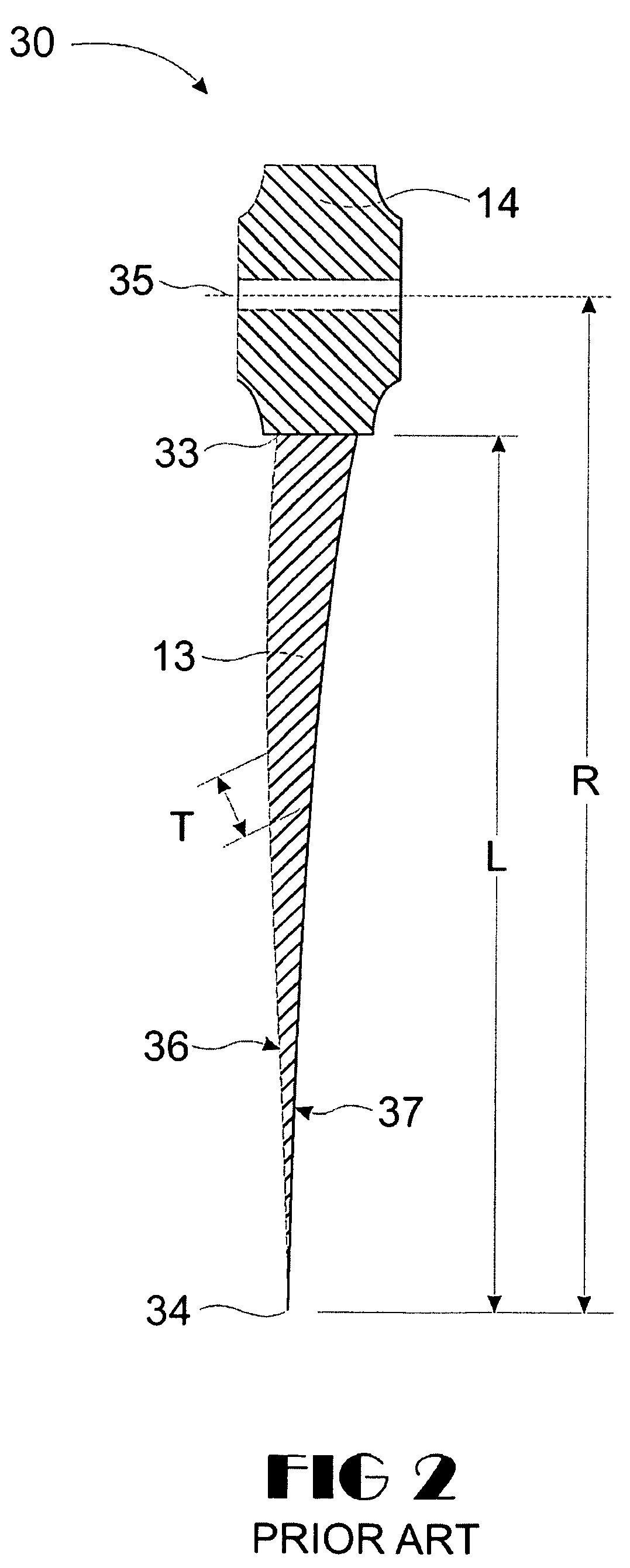Rotor design for submersible electronic generator
a technology of electronic generators and rotors, which is applied in the direction of sea energy generation, non-positive displacement fluid engines, liquid fuel engine components, etc., can solve the problems of seaweed and the potential for fish kill and other marine species injury, and the collection of seaweed and other submerged debris on the rotor
- Summary
- Abstract
- Description
- Claims
- Application Information
AI Technical Summary
Benefits of technology
Problems solved by technology
Method used
Image
Examples
Embodiment Construction
[0043]Referring now to the drawings, and first to FIG. 1, there is shown a schematic view of a typical prior art electrical power current generating system, generally designated 10. The power current generator 10 includes an electrical generator 11, rotor blades 12,13 attached to a rotor hub 14 which is further attached to a rotor shaft15 which is connected to step-up gears 16. The rotor shaft 15 has an external portion exterior to the generator housing 19 connecting to the rotor hub 14 and an interior portion interior in the generator housing 19 connecting to the step-up gear box 16. The rotor shaft 15 transfers the harnessed rotating mechanical energy to the step-up gear box 16 which in turn increases the rotation speed sufficient to generate electricity.
[0044]The kinetic energy in the water current causes the rotor blades 12,13 to rotate which in turn cause the rotor shaft 15 to turn since both are commonly attached to the rotor hub 14. Water is several hundred times denser than ...
PUM
 Login to View More
Login to View More Abstract
Description
Claims
Application Information
 Login to View More
Login to View More - R&D
- Intellectual Property
- Life Sciences
- Materials
- Tech Scout
- Unparalleled Data Quality
- Higher Quality Content
- 60% Fewer Hallucinations
Browse by: Latest US Patents, China's latest patents, Technical Efficacy Thesaurus, Application Domain, Technology Topic, Popular Technical Reports.
© 2025 PatSnap. All rights reserved.Legal|Privacy policy|Modern Slavery Act Transparency Statement|Sitemap|About US| Contact US: help@patsnap.com



